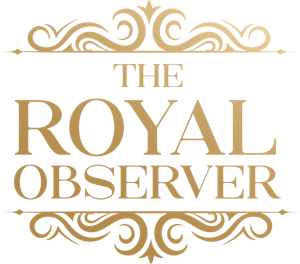The Crown's Only Voluntary 'I Quit': A Look Back at the 1936 Abdication of King Edward VIII

King Edward VIII renounced the British throne on December 11, 1936.
Prince Harry's May 19, 2018, wedding to American divorcée Meghan Markle is the perfect example of just how much life changed during the late Queen Elizabeth II's record-breaking reign. It's difficult to imagine that the U.K. once faced a government-shaking constitutional crisis because a royal wanted to marry someone who was divorced.
But that's exactly what happened in the mid-1930s when King Edward VIII, Elizabeth's beloved uncle, fell for another American, socialite Wallis Simpson, who was divorced from her first husband and in the process of divorcing her second when they fell in love.
Although "Megxit" became another Earth-shattering royal controversy in the early 2020s, it is worth revisiting the House of Windsor's scandal to end all scandals 87 winters ago.
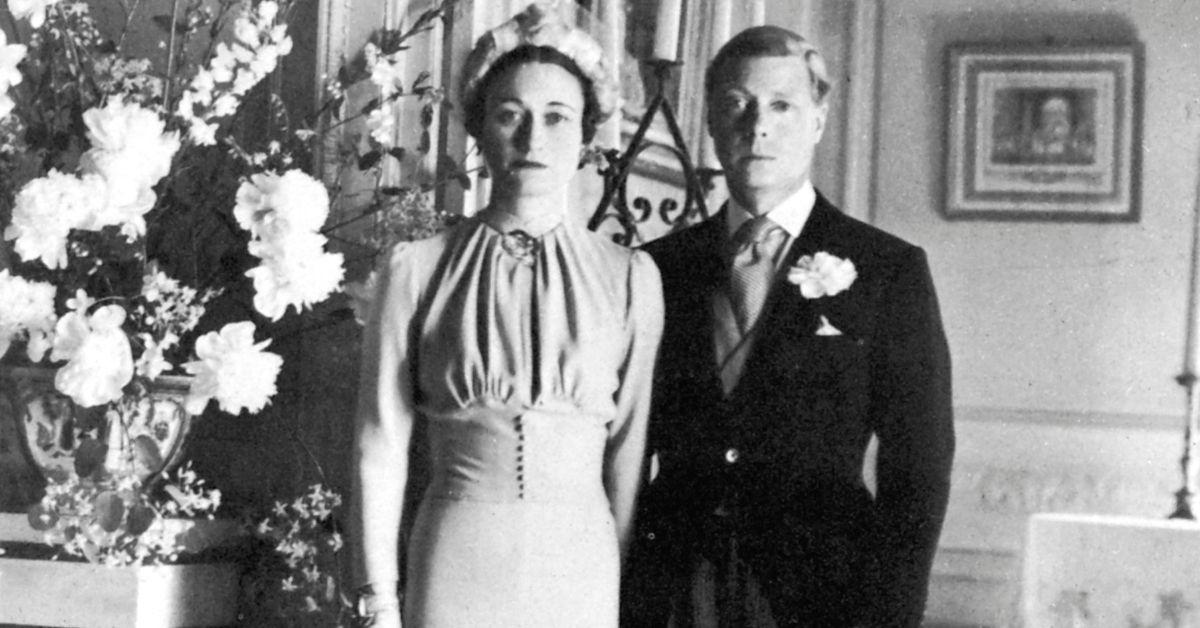
King Edward VIII renounced the British Crown to marry American divorcee Wallis Simpson.
As the nominal head of the Church of England, which at the time didn't allow divorced people to remarry in the church if their former spouses were still alive, Edward was forbidden from marrying the Pennsylvania-born Simpson if he wished to remain on the throne he inherited in January 1936.
It didn't help that the jewel-loving Simpson had a racy past. Joseph Kennedy, the American ambassador to Great Britain at the time, described her as a "tart," and his wife, Rose, refused to dine with her. Even future Prime Minister Neville Chamberlain, then Chancellor of the Exchequer, doubted Simpson's intentions.
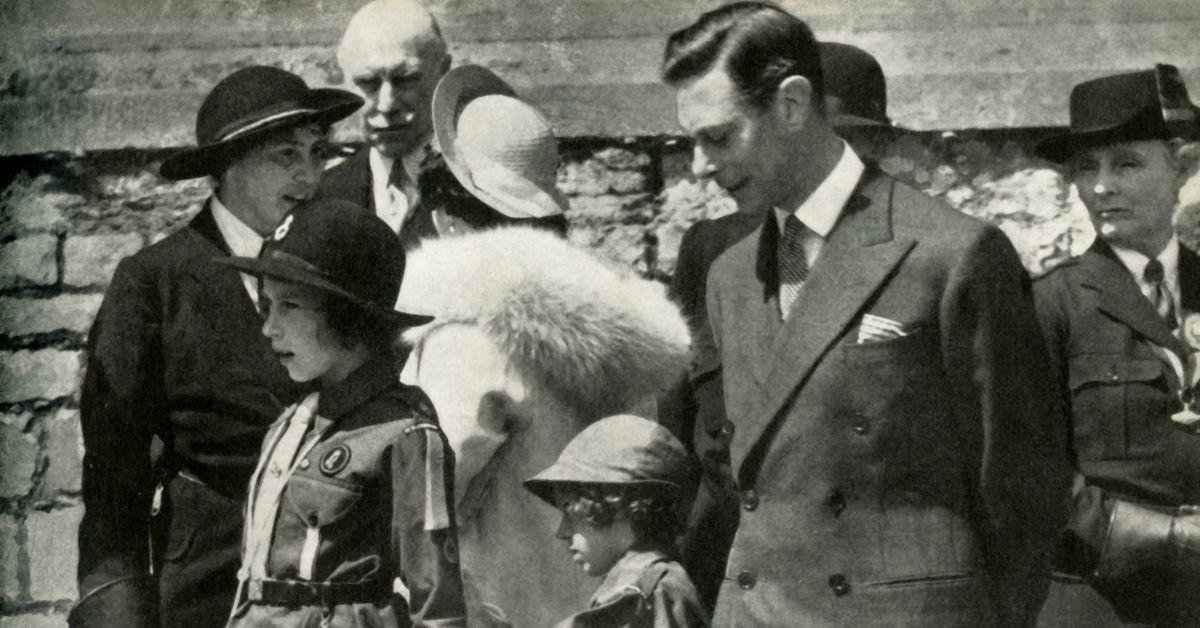
King Edward VIII's 1936 abdication led to King George VI becoming the new monarch with a 10-year old Princess Elizabeth (far left) as his heir.
Chamberlain went on to write in his diary that she was "an entirely unscrupulous woman who is not in love with the King but is exploiting him for her own purposes. She has already ruined him in money and jewels..."
Members of the British government became further dismayed by the proposed marriage after being passed intelligence that Simpson might be an agent of Nazi Germany. (She certainly was pro-Nazi.)
As the scandal unfolded, Elizabeth's parents, then the Duke and Duchess of York — who would see their lives forever altered by the outcome of Edward's standoff with the government — watched in dismay. Finally, on December 10, 1936, Edward bowed to the inevitable fact that he could not keep both the throne and his beloved and signed a declaration of abdication. His younger brother became King George VI the following day, immediately upon Edward giving royal assent to the Act of Parliament finalizing his abdication.
Later that day, he addressed the British people in a BBC radio broadcast, stating that he could not do his job "as I would have wished" without the support of "the woman I love" and announcing that he was surrendering the throne. His reign had lasted just 327 days.
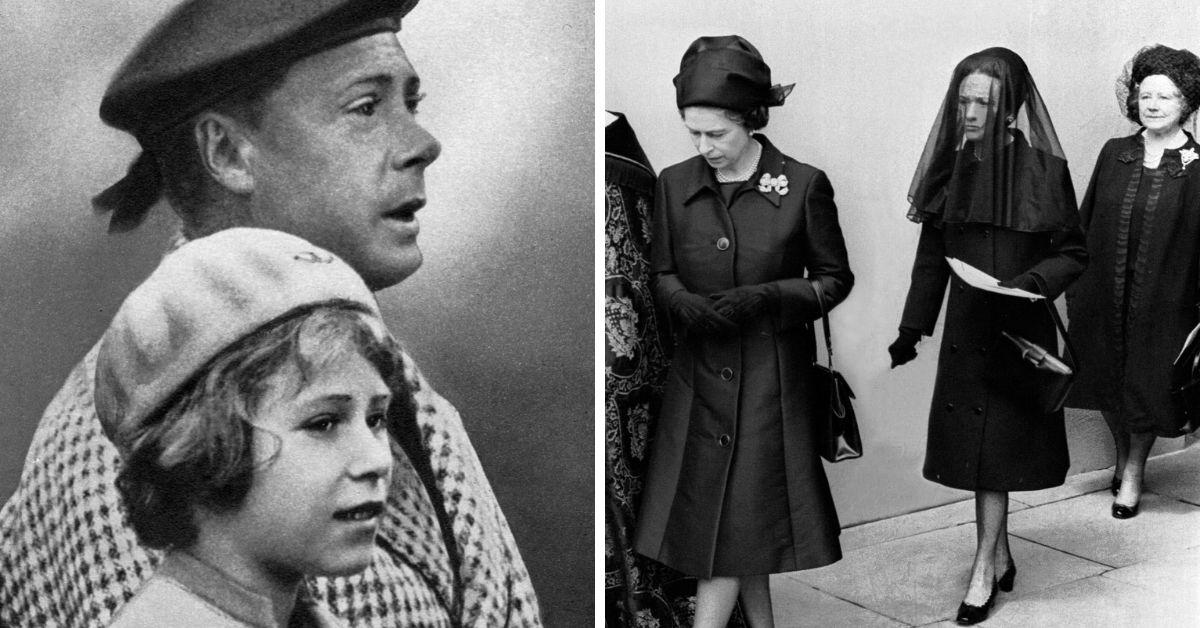
Princess Elizabeth with King Edward VIII in 1936; Queen Elizabeth II leads the former Edward VIII's funeral in 1972.
The next day, Edward, now dubbed the Duke of Windsor, departed England for a life in virtual exile. Some reports suggested he had hopes of returning in a blaze of glory if Hitler's Germany prevailed.
"After the war is over and Hitler will crush the Americans... we'll take over... [The British] don't want me as their king, but I'll be back as their leader," he was reported as saying. Elizabeth, now the heiress presumptive to the British throne, was only 10 at the time and adored her uncle. Despite the traumatizing years that followed, the pair remained close.
While in Paris, shortly before Edward's death on May 28, 1972, she visited him at his bedside. She also cleared the way for his burial at Frogmore, in the royal grounds behind the mausoleum of Queen Victoria and Prince Albert. Wallis was buried next to him after her passing on April 24, 1986.
But as much as she loved her uncle, Elizabeth remained haunted by the crisis he caused and the threat his actions posed to the future of the monarchy. It remained one of the driving forces behind her devotion to duty and to putting the country's interests above her own every day of her 70.5-year reign.
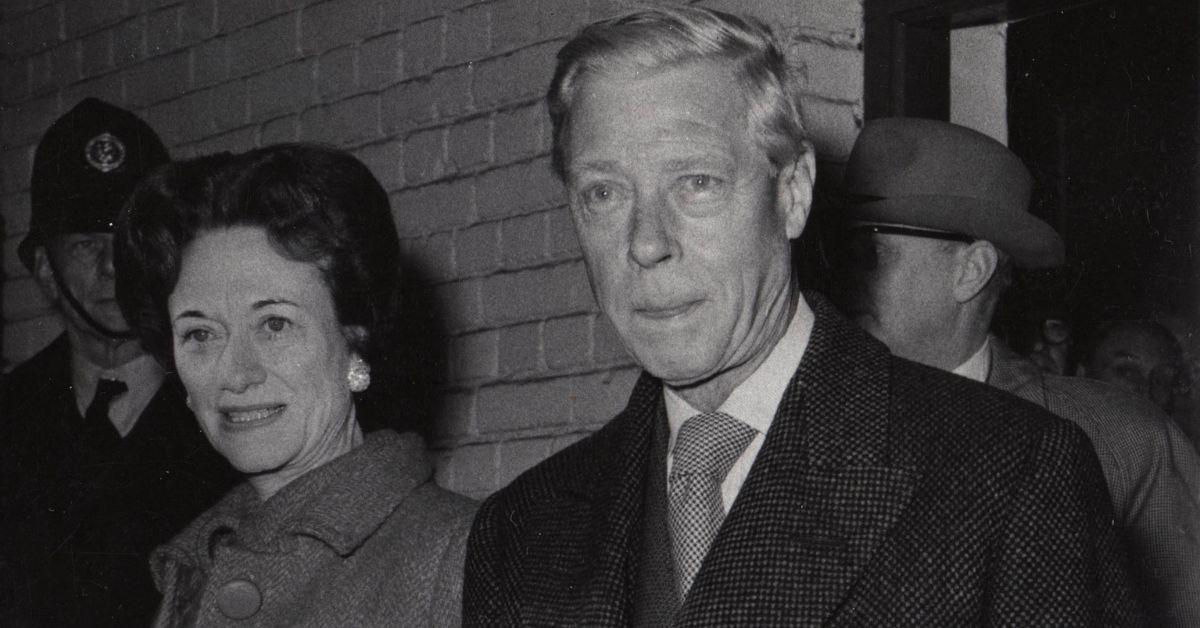
The Duke and Duchess of Windsor pictured in the 1960s.
Powered by RedCircle
